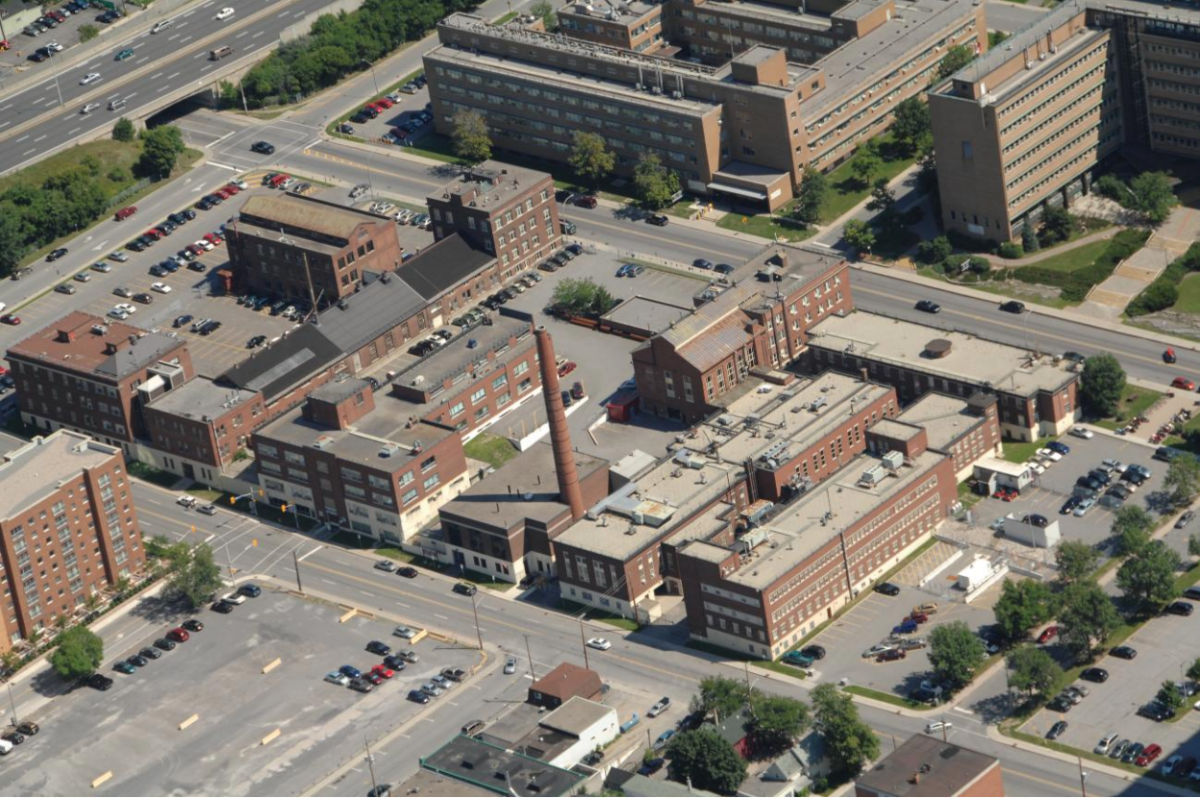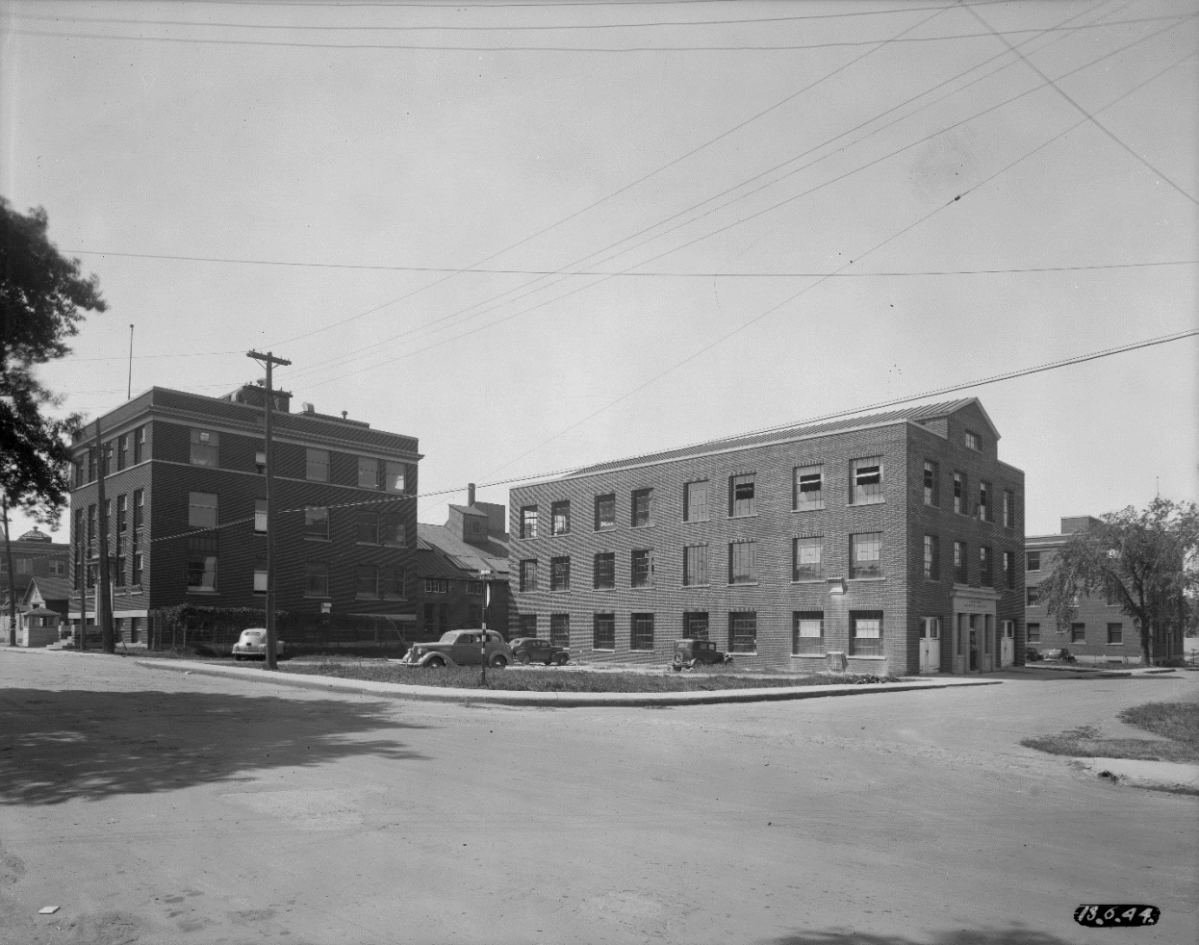UPDATE: City council on March 6 approved the heritage designation of the Booth Street Complex and zoning changes for the redevelopment.

If the City of Ottawa’s heritage department and built-heritage subcommittee get their way, an old, industrial federal government office complex located just west of Ottawa’s downtown core and slated for redevelopment will be designated as a heritage site.
Built from 1911 until 1952, the buildings in the “Booth Street Complex” were designed and constructed “to support the federal government’s … research in fuels, metals, metallurgy and explosives,” according to a report prepared by staff in the city’s heritage department.
Industrial architecture “may not always be grand,” according to one member of the city’s built-heritage subcommittee, but the aging offices, laboratories and research facilities of the Booth Street Complex together tell a story that’s worth preserving.
The complex — bordered by Booth, Norman, Rochester, and Orangeville streets in Ottawa’s Little Italy neighbourhood — was once the headquarters for the federal Department of Mines. The 2.6-hectare site the complex sits on was active until the early 2000s.
In 2015, Canada Lands Co., a federal Crown corporation that specializes in real estate and development, acquired the site from Natural Resources Canada.
The corporation’s plans for the redevelopment of the Booth Street Complex include constructing five new high-rises, undertaking three additions to existing buildings and adding five urban squares and parks and Woonerf-style streets.
The city wants to preserve the majority — 12 — of the existing structures, including the “iconic” smokestack attached to the complex’s central heating plant. Many local residents considered the old chimney to be an important neighbourhood landmark, according to city staff’s report.
Four other buildings have been tapped for the chopping block because they’re either considered to be of “lesser historic value” or they’re not “outstanding” examples of the heritage characteristics the city is looking to preserve.
The built-heritage subcommittee gave the proposed heritage protection plan for the Booth Street Complex its blessing on Monday.
“I think what we’re going to end up with here is a great addition to the existing community,” Catherine McKenney, the city councillor for the area that includes the complex, said after the meeting, lauding the proposed heritage designation and the proposed addition of residential buildings.
The planning committee will next review the file on Feb. 28. The complex’s heritage designation must also be approved by city council.
Ottawa’s ‘Distillery District’?
Heritage staff’s report to the subcommittee noted that the new high-rise developments on the site will serve as “visual markets,” similar to the towers found in Toronto’s historic Distillery District.
This got some members of the subcommittee chatting about the potential for the Booth Street Complex to one day be Ottawa’s version of the popular Toronto destination for arts and entertainment.
“I certainly hope that’s the direction this complex can go towards,” subcommittee member River Coun. Riley Brockington said.
Barry Padolsky, another public member of the sub-committee, echoed that sentiment, going as far as to put Canada’s largest city on notice.
“Toronto, beware your distillery district. This one is going to be better,” he said.
Later, McKenney, who also sits on the sub-committee, laughed at the enthusiasm, saying “everybody wants a distillery district somewhere.”
“This certainly lends itself to that … but it’s also important to remember that the concept plan doesn’t have through streets, so it’s going to be a very walkable, very pedestrian, very public space for people,” she said. “So it’s pretty exciting, when this gets off the ground.”
Mary Jarvis, director of real estate for the Canada Lands Co., told the sub-committee the long-term plan for the site is to eventually release it to the market.
In response to a question from Brockington, she said the Crown corporation’s approach is to add value to the site and work with the city, among others, to encourage potential buyers to reinvest in the site’s heritage buildings and protect them in the long term.
Committee praises Canada Lands’ consultation process
After acquiring the site, Canada Lands Co. hosted three large, public open houses and two public advisory committee meetings about the future of the complex, according to the staff report.
On top of that, the corporation had focus groups walk around the property, McKenney said.
McKenney described this consultation process as “exceptional” and told her colleagues the city could “learn a lot from it.”
She added she believes the proposed LeBreton Flats redevelopment “would really benefit” from that same type of process” as the massive project moves forward.









Comments